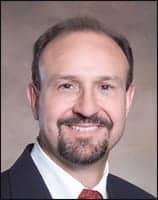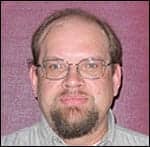 |
| Paul Tessier |
In 2000, the founders of Radianse, Andover, Mass, were determined to make real-time location cost-effective and integral for tracking and monitoring equipment and patients in health care facilities. The company’s location-enabled applications help fine-tune the life cycle for purchasing and tracking equipment, boosting throughput, and enhancing patient care. Its client roster includes Brigham and Women’s Hospital, Yale-New Haven Hospital, PinnacleHealth, Providence Health Center, Hospital of the University of Pennsylvania, and Baptist Health System. 24×7 recently spoke with Vice President Paul Tessier about its niche in the health care continuum and how it plans to keep its clients nimble.
24×7: What is your history with the company?
Tessier: I was a Radianse founder in 2000—one of four founders from HP Medical, now Philips Medical. I am chief strategy officer and executive VP, still involved in virtually every aspect of the business. I work with our clients and physician CEO to better understand how our RTLS [real-time location system] can help hospitals document and drive the patient care process. A client invests in us to track assets, which of course has patient care implications—immediately finding a device being recalled, for example. But right from the start we try to get hospitals to think, “What else can we do with this platform?” Helping to answer that question is what I spend a lot of my day working on.
24×7: What is your company’s niche?
Tessier: Health care is our sole focus, and within that our niche is to use accurate room-level location and our patented knowledge-engine software to improve the patient experience and clinical effectiveness. We want our location technology to fade into the background and our applications to be front and center in enabling greater efficiencies and evidence-based medicine. So we are there to find a medical device and report on utilization, and—with the same platform—enable some very advanced applications using RTLS for real-time measurement and communication of patient status and their providers and equipment as they move throughout the hospital along individual care pathways.
24×7: How does the technology fade into the background?
Tessier: It’s not a perfect analogy, but just as electricity and plumbing are always there and always doing what you need, our platform is there behind the scenes, working reliably to provide information automatically and transparently. We don’t want hospitals to have to think about the infrastructure—we want them to interact with the powerful information it provides to solve many of their problems, from optimizing equipment utilization to improving patient flow.
24×7: You recently announced a plug-and-play Wi-Fi receiver. Please explain.
Tessier: It’s about giving hospitals choice, the best of both worlds, really. Our systems have always used a hospital’s existing local area network, but that has required installing cables, which creates some dust, so to speak. We are giving hospitals that have Wi-Fi networks the choice to simply plug our receivers into their existing wireless network for a faster, simpler RTLS installation, free of dust or other disruption to care. This might be hospital-wide or in specific care units. We can do a mix of LAN and WLAN receivers as appropriate.
24×7: How is it the best of both worlds?
Tessier: Providing Wi-Fi receivers doesn’t make us a Wi-Fi-location company. We still believe—and the laws of physics support—that our approach is more precise and accurate, particularly for consistently reliable room-level location. So we just use Wi-Fi for what it was intended: to transmit data. We continue to use our patented location algorithms, active-RFID, and the 433 MHz UHF band to calculate location.
24×7: Why 433 MHz?
Tessier: The 433 MHz radio location band has been approved by the Federal Communications Commission for more than 60 years, is less congested, and is not as susceptible to propagation issues as 2.4 GHz—from floor hopping to reflection off mobile carts, beds, and other items in the health care environment. These issues can also affect accuracy.
24×7: Why is it necessary to pinpoint the equipment to room level, rather than simply knowing its general whereabouts on a given floor?
Tessier: It’s important for a hospital to really think about that before choosing an RTLS. If everyone agrees that simply knowing in what unit or on which floor an infusion pump is located, then yes, you have more choices. But if you want to know where to immediately go to get your hands on devices for preventive maintenance to meet Joint Commission compliance standards, or to round up recalled devices right now because they may pose a risk to care, you want room-level accuracy. You might want to know that a device is clean and ready—or not in use—based on its precise location, instead of just being located in a particular unit. If not, you could still end up wasting time getting to the device only to find that it’s not usable or serviceable at that time. Where is the efficiency in that? There are also serious concerns when clinicians need to find an ambulatory patient whose monitor alarms, or a patient in need of time-sensitive treatment. Not every platform can power both asset tracking and patient tracking.
24×7: Do you need additional receivers for greater accuracy, such as exciters?
Tessier: Our solution doesn’t require exciters. We take a totally different approach. Our receivers and patented algorithm are smart enough to figure out how close an active-RFID tag is to receivers and triangulate an accurate room-level location. But even for room-level accuracy, you don’t need a receiver in every room. And we’ve recently enhanced our location algorithm to provide even greater flexibility in where you place the receivers and how many you need. This will further reduce installation costs.
24×7: How accurate is accurate enough?
Tessier: Radianse has peer-reviewed data on accuracy, which came out to virtually 100%. Our system is always there, always on.
24×7: How does evidence-based medicine relate to real-time tracking?
Tessier: The relationship is based on creating a clinical environment smart enough to execute on the promises of evidence-based medicine. We know the people are smart and believe in the protocols and want to follow them. Now you layer the ability to accurately correlate time, identity, location, and clinical context to see care as it happens with a system that understands and responds to interactions among people, clinical spaces, and medical devices. So, an alert is automatically generated if a stroke patient isn’t evaluated within however many minutes the protocol designates, or a transport tech is paged automatically to get a patient to imaging.
24×7: How does fostering smarter health care environments deliver a return on investment?
Tessier: By reducing asset shrinkage, increasing utilization, and reducing excess capital expenditures or rentals. You can set alerts to know when any device is moving outside preset boundaries, you can keep track of equipment that moves as patients are transported, and you can run reports to know when and where equipment may be underutilized. We have customers that documented 50% reductions in lost equipment. But there are other paybacks too—reducing overtime by 50%, increasing OR utilization by up to 70%, reducing phone calls by 50% to streamline communications, and turning over beds 20% faster.
24×7: How has your company grown?
Tessier: Primarily by word of mouth. Health care is a tight-knit industry. We were in some premier institutions early on, and have earned a certain level of respect for our commitment to offering clinically relevant applications while continuing to focus on technology innovations.
24×7: How is your industry changing?
Tessier: When we installed our beta in the early years, we were a sole player after years of solutions that simply were not practical for health care. Now, it is a very crowded marketplace, so many technologies. We still believe we are the most practical and extensible for health care, but we understand that it’s very confusing.
24×7: What is the biggest challenge for your company right now?
Tessier: To break through the confusion, the hype, and claims.
24×7: What distinguishes you from the competition?
Tessier: A platform that can solve many problems, perhaps some we haven’t even thought of yet. Room-level accuracy, ease of installation, health care expertise, proven ROI.
24×7: Where will your company be 5 years from now?
Tessier: We will be a market leader in providing RFID-driven, evidence-based management applications. We will have documented, peer-reviewed studies that show ROIs of 15 months or less, and we will be helping hospitals improve regulatory compliance, clinical effectiveness, and patient satisfaction.
Judy O’Rourke is associate editor of 24×7. Contact her at .





